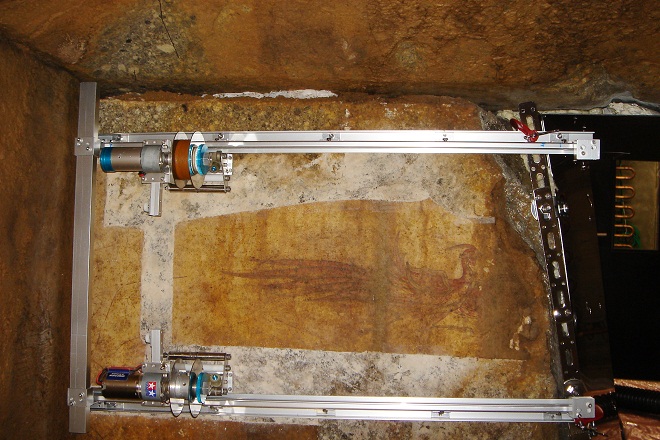Kitora Tomb Mural Paintings Recommended as National Treasure
March 20, 2019
Tokyo- Japan's Council for Cultural Affairs on Monday recommended that three sets of cultural assets be designated national treasures, including ancient mural paintings at the Kitora tumulus in Asuka, Nara Prefecture.
The recommendations made to culture minister Masahiko Shibayama also covered a set of wooden sculptures, including one of the Healing Buddha, at the Toshodaiji temple in the same western Japan prefecture.
The council, chaired by Makoto Sato, executive at the National Institutes for the Humanities, also recommended the designations of 41 sets of assets as important cultural properties, including 67 documents related mainly to warlord Toyotomi Hideyoshi in the country's warring period more than 400 years ago.
New registrations of tangible cultural properties were sought for 153 buildings, including the Kudan Kaikan hall in Tokyo's Chiyoda Ward, a historic building in the Imperial Crown style, characterized by Japanese-style roofing on a Western structure.
After the designations and registrations, expected to be announced soon in line with the council's recommendations, Japan will have 10,772 artworks designated as important cultural properties, including 893 national treasures, and 12,281 buildings registered as tangible cultural properties.
Mural paintings at the Kitora tomb depict four divine animals from Chinese mythology representing the four cardinal directions. The painting of Red Phoenix on the southern wall, one of the four animals, and a celestial map on the ceiling, among the oldest found so far in East Asia, are considered especially important.
The sculptures at Toshodaiji are very likely to have been produced with the involvement of Chinese craftsmen who accompanied high-ranking Chinese Buddhist monk Jianzhen, or Ganjin, to Japan in the eighth century. The works are considered the starting point for Japanese wooden sculptures.
The Toyotomi-related documents include one to name Hideyoshi as "kanpaku," or chief adviser to the emperor. Jiji Press
Latest Videos
- THE UNTOLD STORY EXPERT INSIGHTS INTO THE UKRAINE
- NEGOTIATING A NEW ORDER US RUSSIA TALKS ON UKRAIN
- Ukraine: A Pawn in the Geopolitical Game? Will Trump Intervene?
- US VP VANCE CRITICIZES EUROPEAN DEMOCRACIES AT MUNICH SECURITY CONFERENCE
- UNCOVERING THE WEB OF DECEIT: CIA INFILTRATION OF THE MEDIA
- SHIFTING SANDS: TULSI GABBARD’S CONFIRMATION AND THE EVOLVING GLOBAL LANDSCAPE
- FAUCI SCANDAL: A THREAT TO GLOBAL HEALTH AND DEMOCRACY






